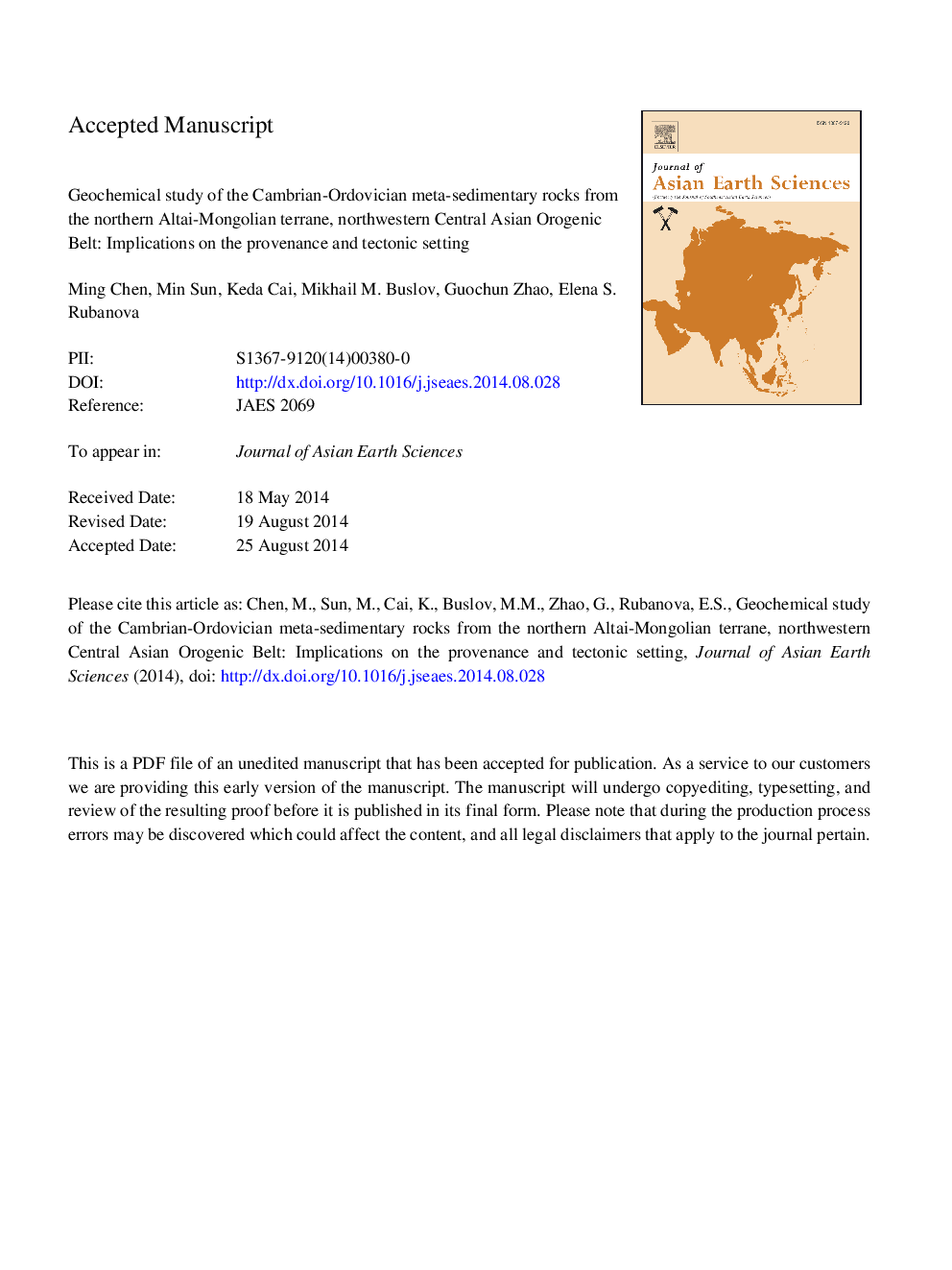| Article ID | Journal | Published Year | Pages | File Type |
|---|---|---|---|---|
| 6444294 | Journal of Asian Earth Sciences | 2014 | 71 Pages |
Abstract
The Cambrian-Ordovician meta-sedimentary rocks from the northern AM show variable major-element compositions, with negative correlation between SiO2 and TiO2, Al2O3, Fe2O3T, MgO and K2O. Their high ICV values (1.18-2.53) and relatively low CIA values (37.9-76.3) indicate that the sediments were immature and probably underwent mild to moderate chemical weathering. The low-SiO2 samples are characterized by relatively restricted SiO2/Al2O3 (mostly 2.60-6.07) and low Rb/Sr ratios (0.02-1.89), implying their proximal deposition without obvious sedimentary sorting and recycling. In contrast, the high-SiO2 samples show much higher SiO2/Al2O3 ratios (15.4-19.9) possibly due to sedimentary sorting and/or silicification. All these samples yield relatively high Al2O3/TiO2 ratios (15.6-22.8), strong LREEs/HREEs differentiation ((La/Yb)N = 4.86-10.7) and obvious negative Eu anomalies (δEu = 0.61-0.83). Combined with their Th/Sc, Zr/Sc, La/Th and Co/Th ratios comparable with intermediate-acidic magmatic rocks, we infer that these kinds of magmatic rocks served as a major source for the investigated meta-sedimentary rocks. The TiO2, Al2O3 and Fe2O3T + MgO concentrations are mostly higher than typical sediments from passive margin, and the Th/U, La/Sc, Th/Sc, Eu/Euâ, Zr/Hf, Zr/Th and La/Th ratios are quite similar to sediments from continental arcs. These data suggest that the Cambrian-Ordovician meta-sedimentary rocks from the northern AM were most likely deposited in an environment related to a continental arc setting rather than a passive regime. These rocks show strong similarities to their counterparts in the Chinese Altai (CA, southern AM) and Tseel terrane (southeastern extension of the CA in western Mongolia) in terms of geochemical compositions and depositional setting. With combination of recent isotopic studies for detrital zircons, our data suggest that the AM probably represented a coherent accretionary prism along a continental arc in the early Paleozoic.
Keywords
Related Topics
Physical Sciences and Engineering
Earth and Planetary Sciences
Geology
Authors
Ming Chen, Min Sun, Keda Cai, Mikhail M. Buslov, Guochun Zhao, Elena S. Rubanova,
